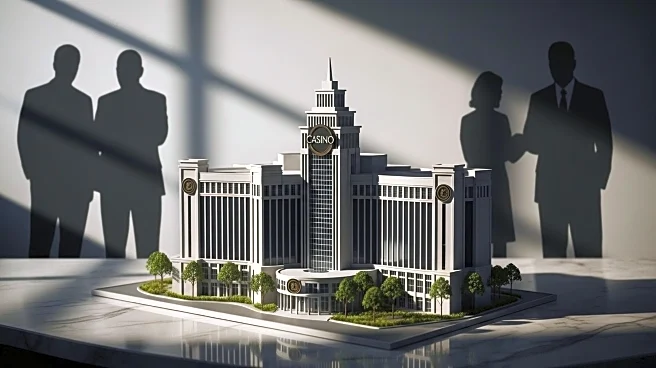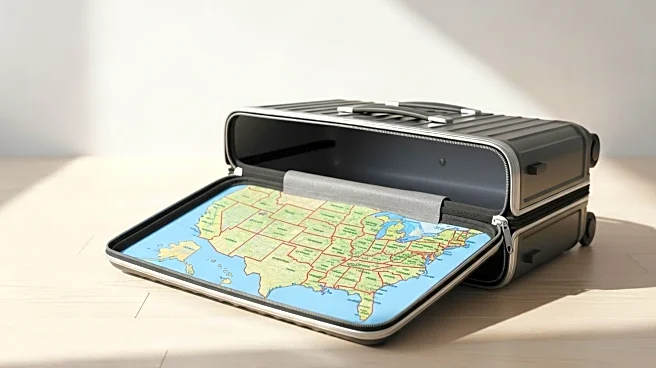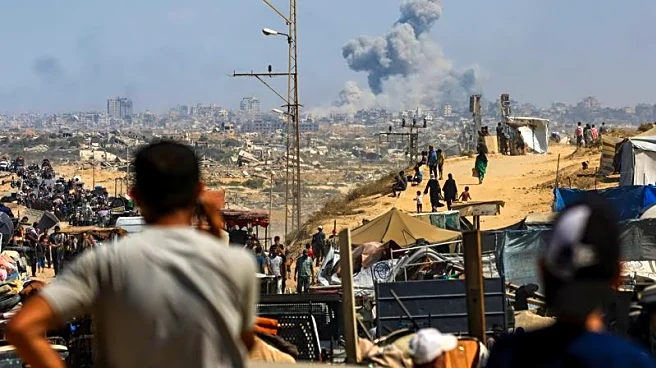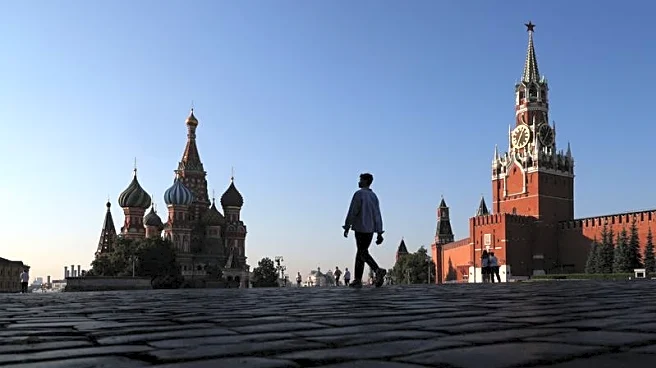What's Happening?
Midtown Plaza, once a hallmark of urban revitalization in Rochester, New York, was the first indoor urban mall in the United States. Conceived by local department store owners and designed by Victor Gruen, the mall opened in 1962 and became a symbol of downtown renewal. It featured a two-level shopping plaza, an underground parking garage, and an 18-story tower with office space, a hotel, and a restaurant. Notable early tenants included McCurdy's, B. Forman Co., and Wegmans Food Markets. The plaza was a popular destination, especially during the holiday season, with attractions like a monorail and Magic Mountain. However, by the 1990s, the plaza faced economic challenges, leading to the closure of its major stores. In 2007, the city purchased the plaza for redevelopment, and it was demolished in 2010. The site, known as Parcel 5, has since been transformed into a community entertainment space.
Why It's Important?
The story of Midtown Plaza reflects broader trends in urban development and retail evolution in the United States. As one of the first indoor malls, it set a precedent for future developments and highlighted the potential for urban centers to revitalize through innovative retail spaces. Its decline in the 1990s mirrors the challenges faced by many traditional malls due to changing consumer habits and economic pressures. The transformation of its site into a community space underscores a shift towards multifunctional urban areas that prioritize public engagement and cultural activities. This evolution impacts local economies, urban planning, and community dynamics, offering insights into how cities can adapt to changing economic landscapes.
What's Next?
The future of Parcel 5 remains a topic of interest for Rochester's community and city planners. As the site continues to serve as a venue for cultural events like the Rochester Fringe Festival and the Rochester International Jazz Festival, discussions about its long-term use persist. The city's decision to maintain it as a public space reflects a growing trend towards creating urban areas that support community interaction and cultural expression. Stakeholders, including local government and community groups, will likely continue to explore options that balance economic development with public access and cultural enrichment.
Beyond the Headlines
The transformation of Midtown Plaza into a community space raises questions about the role of public spaces in urban environments. As cities grapple with the decline of traditional retail spaces, there is an opportunity to reimagine these areas as hubs for community engagement and cultural activities. This shift also highlights the importance of preserving historical elements, as seen with the restoration of the Clock of Nations, which serves as a cultural touchstone for the community. The ongoing dialogue about Parcel 5's future reflects broader societal trends towards sustainable urban development and the integration of public spaces into city planning.












